The content of the article
Seaweed refers to those products that are both beneficial and undesirable to use when breastfeeding. The reason lies in the significant content of iodine in the product. Some mothers, after the birth of a baby, question the possibility of their use of seaweed. It should immediately be said that seaweed during lactation is allowed, but provided that it will enter a limited amount in the woman’s body.
Sea kale is also called kelp. It sounds somewhat unappetizing, but the taste qualities of her many women cannot leave indifferent, and they often prefer to see her in their diet. She is given greater preference by young women who are accustomed to carefully monitor the state of their figure. The product has a low calorie content and contains only 25 Kcal in terms of 100 g. It is no coincidence that kelp is introduced into some dietary supplements. This is due to its nutritional value.
Sea kale is extracted from the ocean. In our country, it can be found, for example, in the Far East. The Chinese believe that it is able to absorb the forces that large water possesses. In former times, the duty of daily use of seaweed by the inhabitants of this state was enshrined even at the legislative level.
Sea kale will protect against poisons and give a good mind
At a time when a woman is breastfeeding her child, eating cabbage is a perfectly acceptable action. It belongs to the category of products with low allergenic ability. It is not capable of delivering trouble to the digestive tract. Those who live in regions with intensive development of industrial production are recommended to eat seaweed. This is due to the fact that the iodine contained in the product in large quantities provides the body with good protection.
The benefits of seaweed
With reasonable, moderate consumption, the product will have undoubted benefits:
- Cabbage helps to eliminate toxins and poisons from the body. In addition, it is able to activate the brain. This effect is achieved due to the content of a large amount of iodine in it. To ensure the daily need for this element, it is enough to consume 100 g of this product.
- The product improves brain function. This effect is achieved due to the content of valuable folic acid in it. A certain role in this is played by B vitamins and ascorbic acid.
- With the use of seaweed, the state of intestinal activity improves. Fiber and vegetable oils contribute to this. They lead to increased peristalsis. This causes the elimination of constipation.
- Cabbage helps to eliminate toxins and poisons from the body. This is facilitated by the alginic acid contained in it. It has the ability to absorb harmful substances.
- It has a beneficial effect on the state of blood vessels. This is due to the presence in the composition of the OMEGA-3 product complex, which prevents the formation and deposition of plaques of harmful low molecular weight cholesterol.
- Seaweed is a product that prevents the occurrence of anemia, the development of which is associated with iron deficiency. This element is contained in sufficient quantities.
Composition and nutritional value
This ocean product has good nutritional value and is the source of many chemicals necessary for the body:
- 100 grams of the product contains 0.9 g of protein, 0.2 g of fat and 3 g of carbohydrates.
- Cabbage is rich in vitamin substances. There are especially many representatives of group B.
- The mineral composition is very widely represented. Cabbage is rich not only in iodine, but also in sodium, potassium, iron, magnesium, and other elements. If you compare kelp with ordinary cabbage, which you are used to seeing on the garden bed, then it exceeds it tenfold in the number of individual chemical elements.
Separate nuances of eating cabbage while breastfeeding
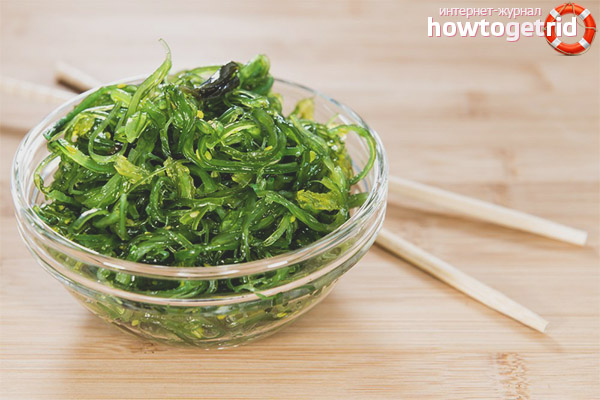
Cabbage is undoubtedly good for the body. But its use during breastfeeding imposes certain restrictions. Immediately after the birth of a child, you can not use it. Better if they find a replacement for more sparing products. When the baby is three months old, she can gradually begin to enter into your diet. In this case, one should not forget about the following subtleties:
- The principle of rationing the quantity. There are no special requirements here. Everything must be done in the same way as with the introduction of any other new product. The initial portion should be tiny in volume, and then the amount gradually increases with constant monitoring of the baby's condition. It is perfectly acceptable if mommy will eat 150 g of cabbage at a time, but not more than three times a week.
- Treatment. The greatest benefit is concentrated in fresh kelp. But you can use it in dried form. To do this, it is pre-filled with boiling water. Over time, the cabbage swells and can be safely consumed. From such a product, various salads are tasty.
- The question of the possibility of using seaweed by a nursing mother is determined by the state of her body. It is necessary to consider each case separately, since the general rule simply does not exist. Of course, if a woman has problems with the digestive tract, you should not use this product. This fully applies to those conditions as a result of which the body is oversaturated with iodine. It is forbidden to use seaweed for women with tuberculosis, with a history of hemorrhoids.
Excessive use of kelp is not worth it. It must be remembered that everything is good in moderation. An excess of iodine will not only not be beneficial, but, on the contrary, can have a harmful effect.
Anyone who loves this product very much and decided to use it in their diet during the period when they are breast-feeding a child should not forget that you should start trying it gradually, with small amounts. It is still unknown how the baby will react to this. The most reasonable step before starting to use is to ask a pediatrician for advice.
Video: the benefits of seaweed


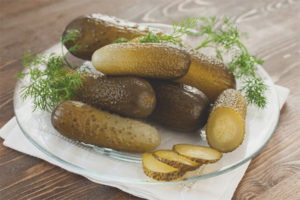
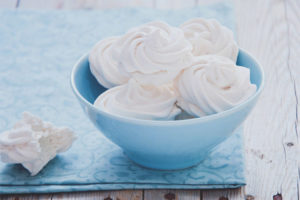
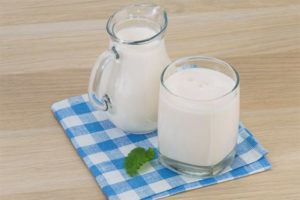
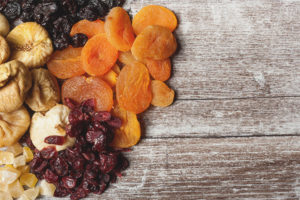
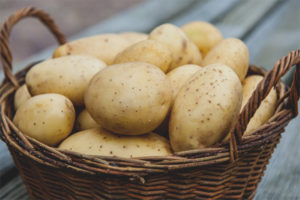

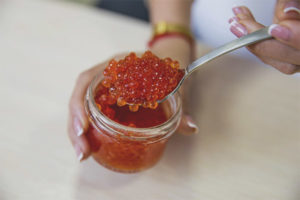
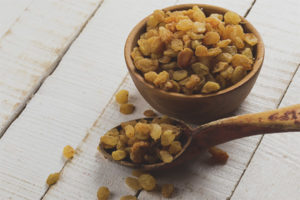
Submit